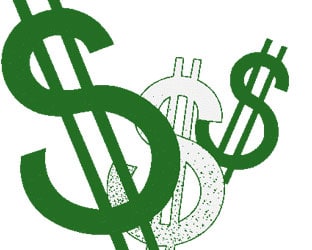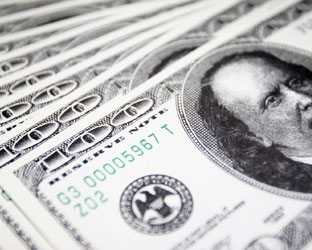 Privately owned Townsquare Radio, whose principal investors are funds of Oaktree Capital, is the latest broadcaster to take advantage of Wall Street’s willingness to buy bonds issued by radio and TV companies. Townsquare is selling $265 million in senior notes, which will be used to refinance its existing debt.
Privately owned Townsquare Radio, whose principal investors are funds of Oaktree Capital, is the latest broadcaster to take advantage of Wall Street’s willingness to buy bonds issued by radio and TV companies. Townsquare is selling $265 million in senior notes, which will be used to refinance its existing debt.
Townsquare Radio, whose parent uses the name Townsquare Media, was built on the platform of the former Regent Communications as Oaktree moved from being the company’s primary debt holder to primary equity owner as the radio group emerged from Chapter 11 in July 2010. But Townsquare then went on to roll up GAP, Millennium and Double O, giving it 202 stations in 43 small- to mid-sized markets. Pro forma for all of those acquisitions, Moody’s Investors Service says Townsquare had 2011 revenues of $202 million.
Moody’s assigned a B2 Corporate Family Rating (CFR) and a B2 Probability of Default Rating (PDR) to Townsquare and a B3 rating to the proposed new issue of senior notes.
“The B2 corporate family rating reflects the company’s high pro forma debt-to-EBITDA ratio of 5.5x as of December 31, 2011 (including Moody’s standard adjustments), risks associated with assimilating recent mergers in combination with potential future debt funded acquisitions, as well as the mature and cyclical nature of radio advertising demand. Ratings are supported by the company’s leading revenue share (#1 or #2 rank in 40 of 43 markets) and audience ratings generated by defensible, well-clustered stations. Management is focused on growing local advertising revenues in small to mid-size markets with cross-promotion capabilities using its digital and live events businesses. Approximately two-thirds of its markets are ranked between #100 and #300 by population, and Moody’s believes that competition is limited in these locations given Townsquare’s peer group, including deep-pocketed broadcasters, have chosen to operate primarily in larger sized markets. Moody’s expects revenues and EBITDA to grow in the low to mid-single digit range over the rating horizon, allowing for credit metrics including debt-to-EBITDA leverage and interest coverage ratios to improve in the absence of debt funded acquisitions. Townsquare is the largest operator focused solely on serving small and mid-sized markets. In contrast to traditional radio operators, executive management has diverse media experience and does not come exclusively from legacy broadcasters. Moody’s believes management is focused on achieving its operating targets and brings experience in revenue generation from new media sources, including the Internet, evidenced by its successful track record growing cellular/wireless businesses in partnership with financial sponsors. Since being brought in to replace executives of the predecessor company in May 2010, management has acquired stations and generated organic revenue and EBITDA growth,” said the analysis from Moody’s in its initial rating of Townsquare.
“Liquidity is good with a minimum $10 million of balance sheet cash, an undrawn $10 million revolver, and more than 4% free cash flow-to-debt ratios,” Moody’s added. “The B3 rating on the proposed unsecured senior notes is one notch below the B2 loss given default model implied rating to reflect Moody’s expectation that Townsquare may raise incremental secured credit facilities to fund additional station purchases, consistent with management’s acquisition strategy. Secured debt would rank ahead of the new notes, and the B3 instrument rating incorporates the company raising at least 40% of the amount permitted under the debt agreements.”
Standard & Poor’s assigned a “B” for both the corporate credit rating and for the $265 million bond offering. That is also a non-investment grade (junk bond) rating equivalent to the Moody’s B2 ratings, so S&P gave a slightly higher rating to the bond issue.
“The ‘B’ rating on Townsquare reflects our expectation that, despite high leverage, the company will be able to maintain adequate liquidity over the intermediate term. We view Townsquare’s business risk profile as ‘weak’ because of risks related to longer-term structural issues facing the radio industry and the company’s small market presence, which we believe contributes to a lower EBITDA margin. We view Townsquare’s financial risk profile as ‘highly leveraged,’ based on its high debt-to-EBITDA ratio of 5.9x (adjusted for operating leases, with a present value of $15 million as of Dec. 31, 2011). Leverage increases to 7.9x when the preferred equity at the holding company is included,”
S&P is projecting that revenues will rise in the low single digits in 2012 after gaining 3% in 2011, with that expected to increase EBITDA by a mid single digit percentage. S&P said the 2011 EBITDA margin was 23%, which works out to $46.5 million at revenues of $202 million.
RBR-TVBR observation: S&P notes that the 23% EBITDA margin is “near the bottom” of the peer group – that after acknowledging that Townsquare’s small market focus contributes to that lower margin. Dating back to the 1990s Wall Street analysts have been obsessed with a one-size-fits all view of EBITDA and broadcast cash flow (BCF). For people who actually understand the radio business (which most Wall Street analysts, unfortunately, do not) small market radio is a very different business than big market radio. And we would add that an EBITDA margin in the 20s is still a lot better than most businesses. For that matter, positive EBITDA is a stranger to many of the so-called “new media” companies that Wall Street has been so hot for.





